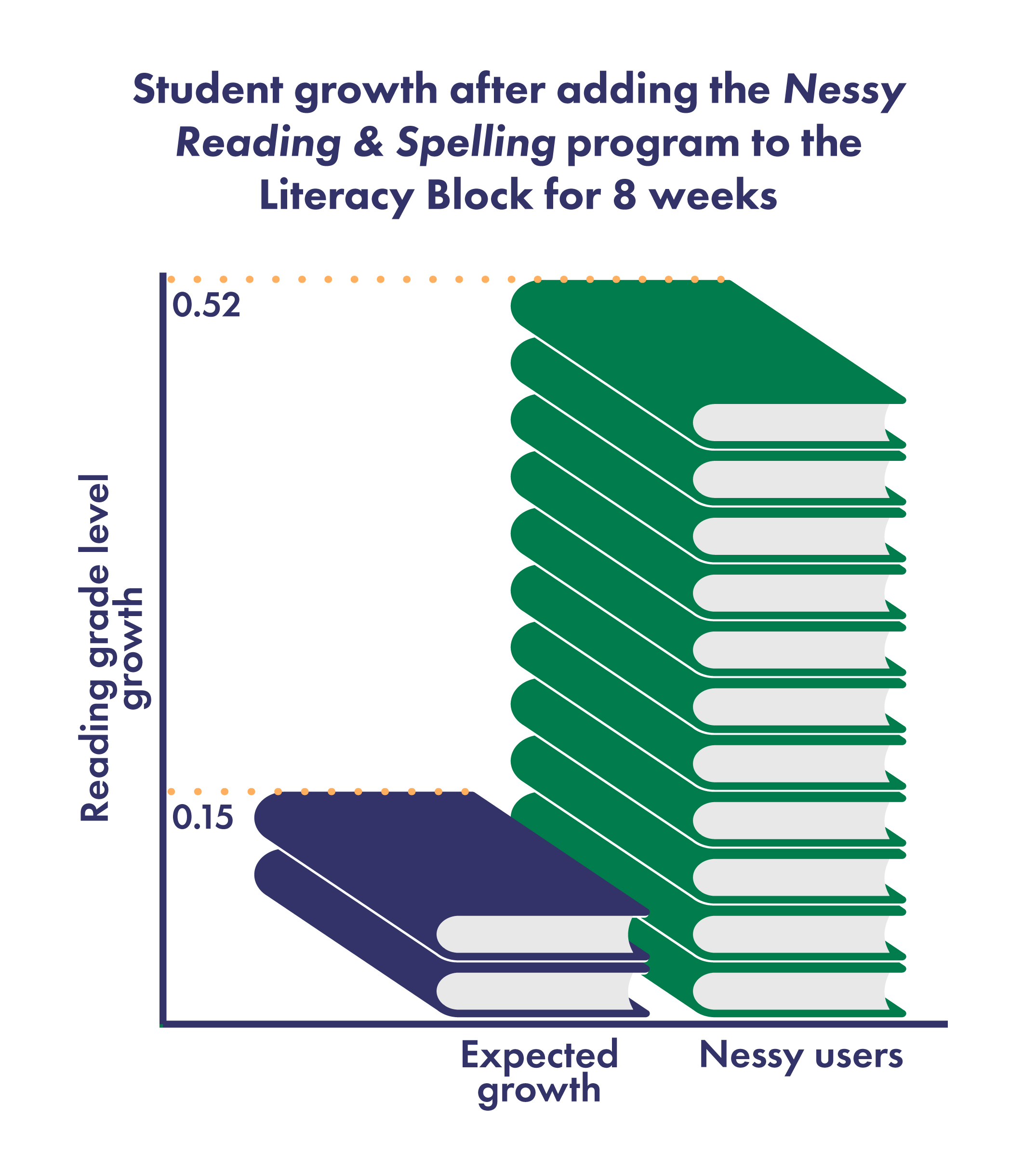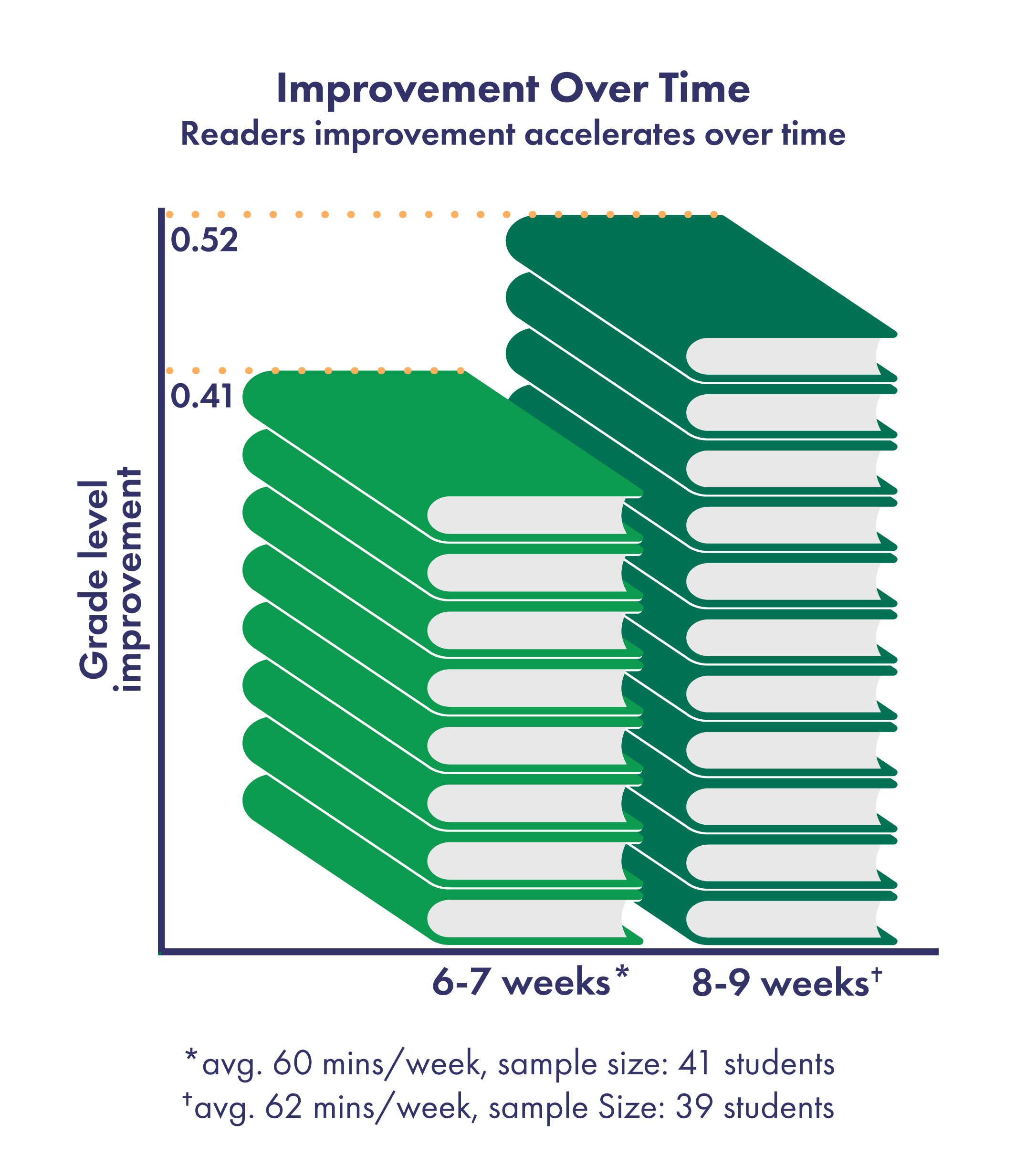Grade Level Improvement of Students using Nessy Reading and Spelling
Data Analysed from Godley Elementary School, Texas USA, June 2019
How Effective is Nessy Reading and Spelling as an SSP (Structured Synthetic Phonics) Program?
Usage and Results Analysis 2019
An analysis of the fidelity of use of the Nessy Reading & Spelling Program, and the student results of those taking the Nessy Reading Target Assessment pre and post use, was conducted in June 2019, on data collected from Godley Elementary School, in Godley, Texas, USA. The Nessy Reading & Spelling program is an Orton-Gillingham influenced digital curriculum. It is accessed by students signing into the platform on computers or tablet.
The School
Godley Elementary School is a campus that serves students in pre-kindergarten and kindergarten, and grades 1-3. It is in northwestern Johnson County, Texas, United States, in the Dallas–Fort Worth metroplex. The school has 668 students on the roll with a student/teacher ratio of 15:1. The racial makeup is 67.1% white and 28.5% Hispanic. 59.1% of students receive free or discounted lunch. 14.5% of students are listed as having limited English proficiency, and 14.2% of students are in the bilingual program.
The Case Study
The data collected for this study was from student assessments and work completed during the spring term of 2019. The students were in kindergarten and first grade. The pre-tests were administered in mid- February 2019. 152 students spent an average of 60 minutes per week working in the program over 6 -10 weeks, and subsequent post-tests were taken in late April or Early May 2019.
Participants and Methodology
Participants
The participants were a mixture of ability groups, and English language proficiency.
Methodology
All students were tested with the Nessy Target Assessment prior to beginning work in the Nessy Reading & Spelling phonics based literacy program.
The students worked for an average of 60 minutes per week on the Nessy curriculum in a a RTI classroom affectionately called “The Monster Lab” on their campus. This was done as part of their literacy block rotation.
Additionally, the classroom teachers had the option of putting students on the program in their individual classrooms during the regular computer rotation time. The students worked for an average of 8 weeks during the spring semester.
The work completed by the children was independent of teacher assistance other than help logging on at the beginning of their sessions.
The Nessy Reading and Spelling program was implemented and overseen by RTI specialist Stacy Brown and her colleague Renee McCoy.
The Nessy Reading Target Assessment
The Nessy Reading Target Assessment was developed in 2005 by Specialist Literacy Teachers, Dyslexia Specialists, and Educational Psychologists, at the Bristol Dyslexia Centre in Bristol, United Kingdom. It is a CLOZE reading activity that measures the reading comprehension and spelling attainment of individuals from 5.5 to 13 years of age. The assessment is also used to monitor the progress of students as they complete the Orton-Gillingham influenced phonemic awareness, phonics, fluency, comprehension, and vocabulary lessons within the Nessy instructional program.
The students using Nessy Reading & Spelling gained on average half of a grade level in reading skills in approximately 6-10 weeks.
Results

The average student gain in reading grade level was 0.5 or half of school year in an average of 8 weeks. An 8 week time period is about 0.22 of this school’s academic year. Those using Nessy exceeded the expected growth of 0.22, in fact they more than doubled it. The 152 first grade and kindergarten students used Nessy independently for an average of 60 minutes per week over 6-10 weeks.
The students using Nessy gained on average half of a grade level in reading skills, in just 6-10 weeks.
